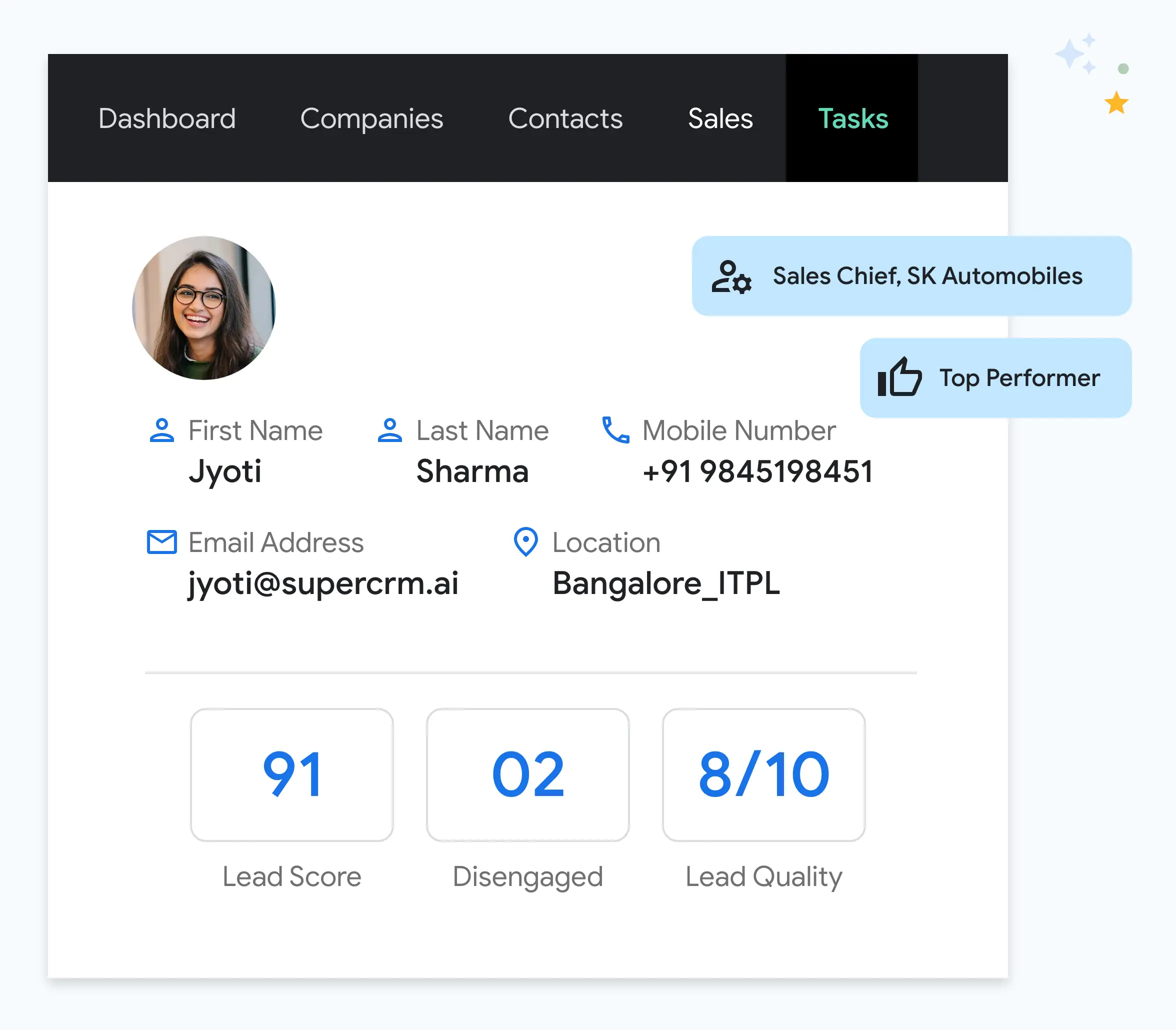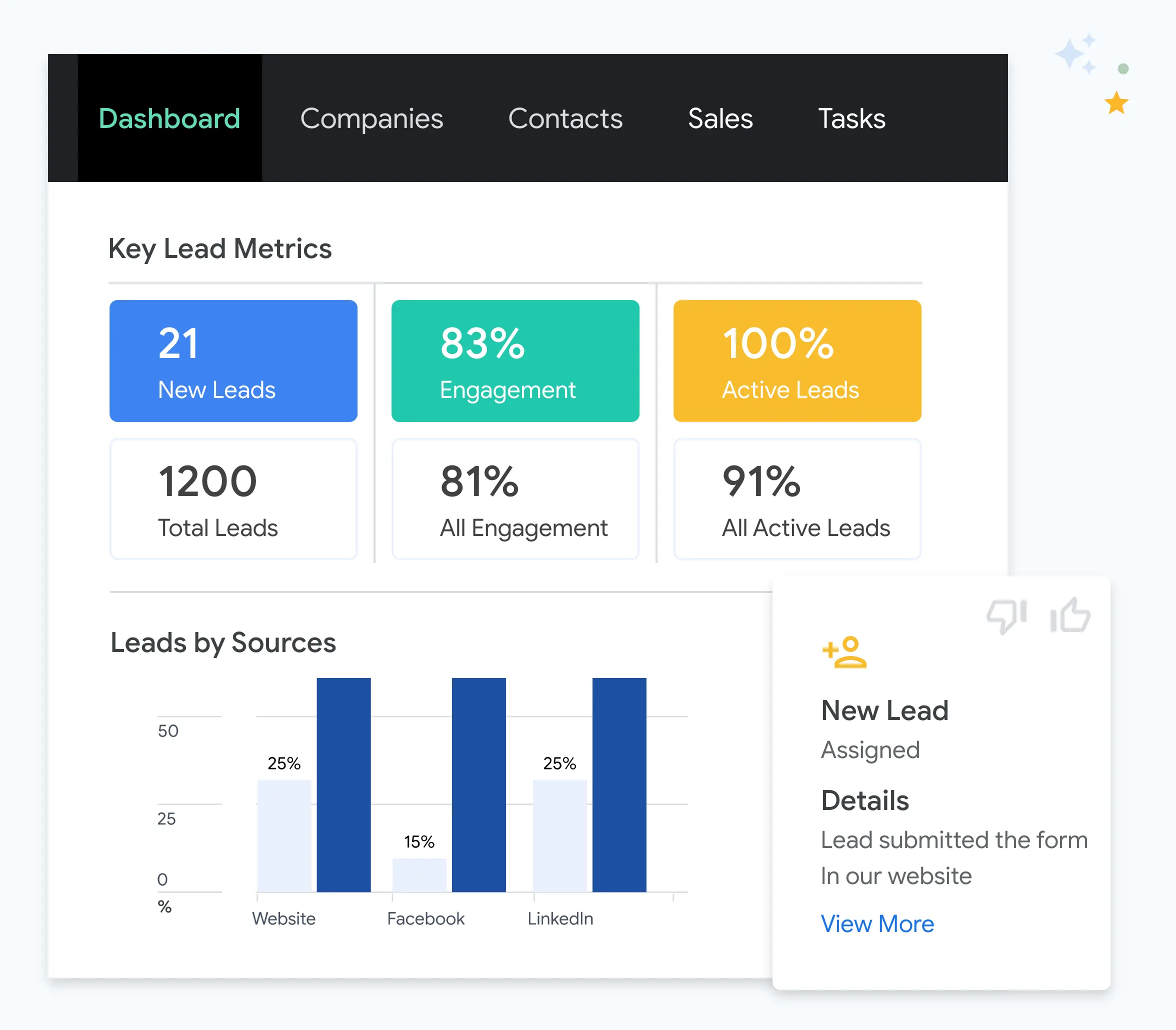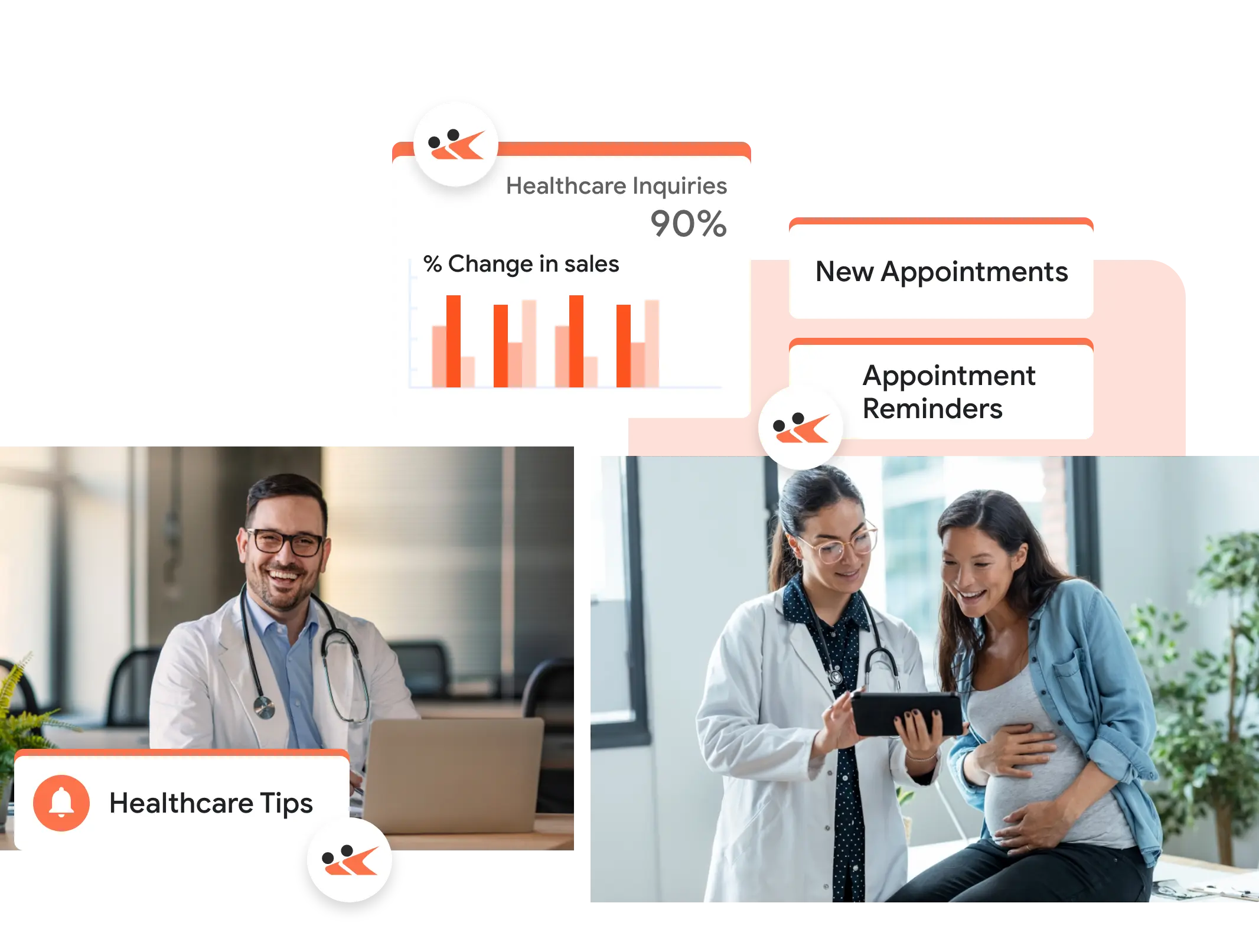Why do healthcare institutions need a CRM?
Healthcare institutions need CRM systems to enhance patient relationships, streamline operations, and improve communication, ensuring efficient care delivery and regulatory complian
Patient Management
Efficiently manage patient information and interactions throughout their healthcare journey.
Contact History
Keep a detailed record of patient communication and touchpoints for personalized care.
Patient Health Records
Centralize patient health records for comprehensive and unified healthcare management.
User-friendly
Enjoy a user-friendly interface, ensuring easy navigation for healthcare professionals.

Enhancing Patient Acquisition
- Capture patient inquiries seamlessly from multiple channels, such as websites, healthcare aggregators, and paid ads.
- Utilize APIs to automate patient intake from portals, forms, and other sources.
- Reduce response times and enhance efficiency in managing patient inquiries.
- Leverage SuperCRM's capabilities to personalize patient interactions based on individual needs, preferences, and medical history.
- Use detailed patient segmentation for targeted and customized care.
- Improve patient satisfaction and loyalty through tailored communication and care
- Automate the assignment of doctors to patients based on factors like patient needs, doctor availability, and specialty.
- Ensure timely and efficient patient response without manual intervention.
- Optimize patient satisfaction and streamline the care process.

Maximizing Healthcare Analytics
- Gain a bird's-eye view of the entire patient acquisition process with SuperCRM's analytical dashboards.
- Track patient sources, engagement, appointment trends, and experience ratings.
- Identify trends, make data-driven decisions, and optimize resources
- Utilize the patient drop-off dashboard to proactively monitor changes in patient utilization of services.
- Gain detailed insights into specific sources of drop-offs, facilitating in-depth analysis.
- Develop effective strategies to improve patient retention rates and satisfaction.
- Simplify and streamline the new patient intake process with visual representations of patient flow across departments and doctors.
- Gain valuable insights into trends impacting patient acquisition rates over time.
- Enhance efficiency and effectiveness in managing patient intake.
You’re gonna love us forever.

Have any thought find here.
Don’t find your answer here? just send us a message for help
Contact us

Patient acquisition involves healthcare institutions attracting more individuals to utilize their medical services and facilities. The aim is to expand the patient base, thereby increasing revenue. This process entails implementing marketing practices that highlight the reasons people should choose their services over competitors.
Patient acquisition focuses on bringing in potential new patients and convincing them of the reliability and excellence of your medical services. On the other hand, patient retention involves ensuring high satisfaction among existing patients to encourage continued loyalty to your institution.
Patient engagement software serves as a tool for effective communication with patients. It facilitates sending appointment reminders, healthcare tips, and other crucial information to patients. Additionally, it can track patient interactions and gather feedback.
The utilization of patient engagement software offers numerous benefits, including:
- Enhanced communication with patients
- Increased patient satisfaction
- Reduction in no-show appointments
- Improved patient outcomes
Patient communication software is specifically designed to automate conversations and monitor interactions with patients. It supports the use of pre-built message templates for more efficient communication.
Mobile CRM for Healthcare enables on-site caregivers to access the entire CRM system on their phones or tablets. This functionality allows them to create, update, or delete patient data as needed while on the go. It aids in tracking location, analyzing productivity levels, and generating day plans for field staff.


